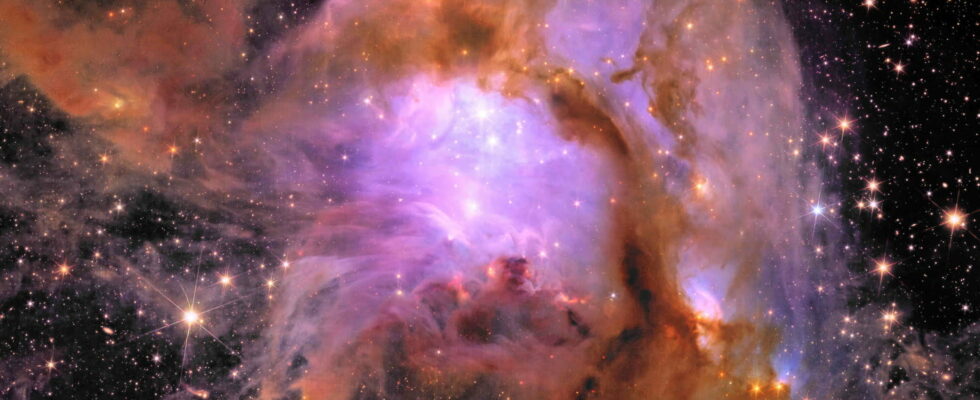The European Space Agency (ESA) has just revealed a unique image of a nebula captured using the cutting-edge instruments of its Euclid space telescope.
Launched less than a year ago, on 1er July 2023, the Euclid space telescope sent us a new series of photos captured from its observation post located 1.5 million kilometers from Earth. Designed by the European Space Agency (ESA), the telescope begins a long work of space observations which should contribute to the understanding of the Universe around us. Galaxies, nebulae and star nurseries, the photos captured by Euclid were obtained in just 24 hours of observation and are breathtaking!
Of the five photos sent by the European Space Agency, the most striking is undoubtedly that of the Messier 78 nebula, a veritable nursery of stars discovered in 1780 in the constellation Orion. This cloud of interstellar gas and dust within which stars are forming was captured by Euclid’s infrared camera. We can see the filaments of gas and dust appear within which stars are born. It is the composition of these gases that gives the nebula its colors. In this new image, more than 300,000 new objects are visible, according to the ESA. The study of this type of formation allows us to better understand the appearance and future of the stars that surround us in the Universe.
In the four other images transmitted by the ESA, Euclid offers us a new vision of several cosmic structures such as clusters of galaxies, merging galaxies or even the star Beta Phoenicis belonging to the Milky Way. The images thus revealed constitute a mine of data for scientists who strive to unravel the secrets of the formation of galaxies within the Universe. After a slight incident in March when frost formed on one of his instruments, Euclid finally regained his sight. It is therefore now functional and proves it to us through these images from the depths of space.
Installed at the Lagrange 2 point, Euclid must achieve scientific objectives that are ambitious to say the least. To carry out its mission, the telescope measuring 1.2 meters in diameter is equipped with two cameras, one of which operates in infrared. In particular, he must map the observable Universe, uncover the secrets of dark matter and study the expansion of the Universe. In short, the device must allow researchers who analyze its data to answer the big questions of modern cosmology. A titanic work which still promises us spectacular images.
